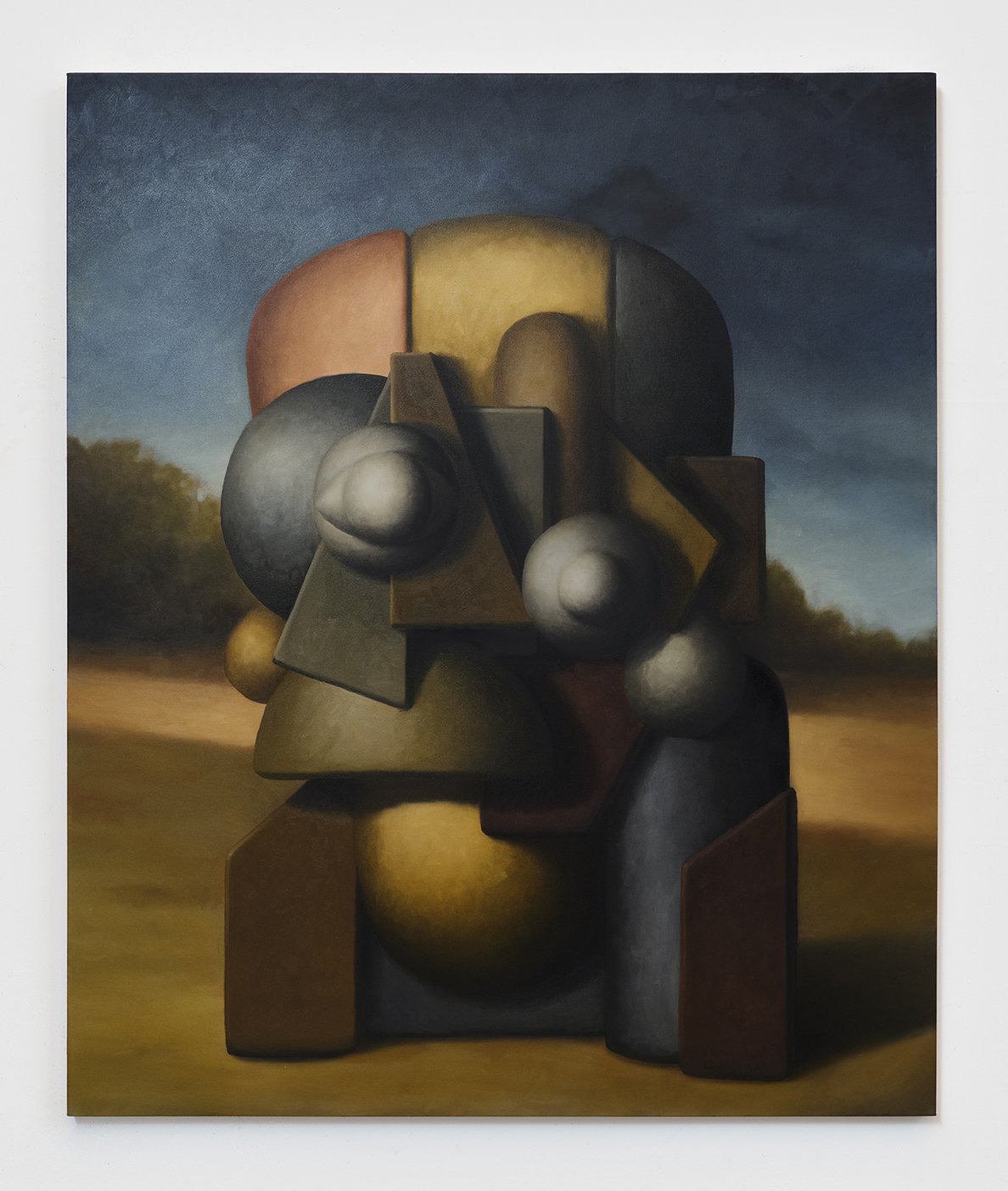Albertz Benda presents the second solo exhibition with the gallery by Los Angeles based artist Devon DeJardin. In this exhibition entitled Echoes of the Past, the artist has reimagined Old Master portrait paintings, redefining a visual language for the traditional genre. DeJardin’s new paintings are the culmination of five years of his exploration into what the artist terms secular ‘guardians,’ who appear as central figures in his compositions. Comprised of geometric shapes assembled into anthropomorphic forms, the guardians have a distinctly modernist feel in their tenuous balance between figure and abstraction: 20th century artists from diverse contexts including Henry Moore, Barbara Hepworth, and Yves Tanguy come to mind as significant inspiration.
In Echoes of the Past, the artist delves further back across art historical eras, interpreting his portraits through the lens of Flemish Primitive and Italian Renaissance artists to the Dutch Golden Age and Spanish Romantic masters. While classical portraiture throughout these epochs focused primarily on royalty and pinnacles of society, DeJardin’s paintings conjure imaginary guardians that protect a wounded society.
The cheerful themes of DeJardin’s earlier work have evolved into a darker, more limited palette, reinterpreting choices by many of history’s greatest artists, including Goya, van Eyck, and Rembrandt. They are conceptual reflections of the era in which the artist has lived as DeJardin’s generation has never known life in a world without war—from the Gulf War and the War on Terror to the ongoing conflicts in the Ukraine and the Middle East. DeJardin metaphorically and physically mines the darkness in society to create his work, using shading and light to subtly tease figures from abstract shapes. The orb-like eyes of his figures appear lighter in tone, signifying a purity of spirit and hope for the future.
As always, his paintings are notable for their meticulous rendering. His figures are so sculptural that they almost seem to emerge from the wall. DeJardin goes straight to the canvas, working without a maquette to depict the figure and background in an organic, liberatory process. In recent years the artist has experimented with framing devices for these figures, including floral, architectural, or landscape imagery. In each of the new canvases, the background corresponds to the era from which the artist reimagined the imagery: six smaller works reflect the intimate and domestic scale of Dutch Golden Age paintings, while two larger vertical works lean on an Italian Renaissance tradition, complete with landscape and drapery surrounding the figures. The show serves as a testament to the enduring power of portraiture as a genre of storytelling, with each painting offering a glimpse into shared human experience across centuries.
On view from March 7 to April 13 at Albertz Benda NYC. 515 W. 26th Street, New York, New York












